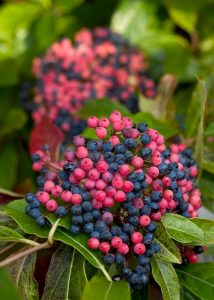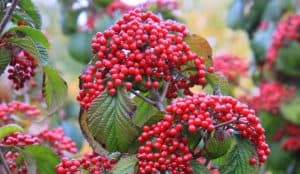Harvest season is here and plants everywhere are producing fruits, nuts, and seeds as part of their life cycle. In the landscape, we enjoy the benefits of this fruiting process….the beauty, the food benefits, and the wildlife that feed on the harvest.
Some of our favorite shrubs showing off this time of year include:
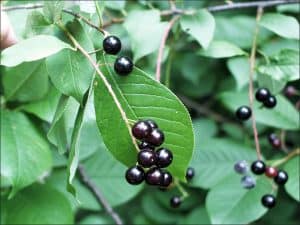
Chokecherry – a 6-10′ tall shrub with red or black fruit that birds will eat in late winter. Sampling this fruit will quickly let you know where this name came from. Until freezing weather, the fruit is pithy with an astringent aftertaste that leaves one looking for something better to eat. The flowers and fall color add to this plants landscape beauty. Chokecherry grows well in Missouri.
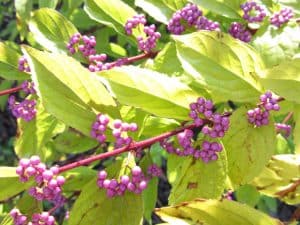
Beautyberry – Native to Missouri, this hardy shrub grows 3-4′ tall and wide and tolerates full sun to some shade. The almost lime-colored foliage and loose habit lends this shrub to informal landscapes. However, the beautyberry’s best feature is the lilac colored fruit borne in late summer through fall.
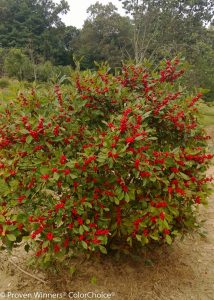
Winterberry – another native shrub is the deciduous holly, or Winterberry. Bright red fruit form through the summer, intensifying in autumn to provide a spectacular show in early winter. Birds are attracted to the fruit, and one winter day you’ll look out at the shrub to see it bare. A good food source for wildlife during a potentially hard winter. Winterberry generally grows 6-8′ tall and require both male and female plants for pollination.
Evergreens can offer a show of fall berries with the red fruit of Yews and frosty blue clusters of Juniper.
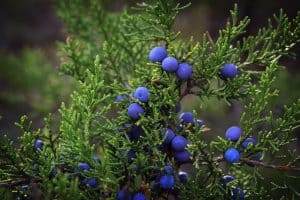

Viburnums are one of the largest groups of shrubs for fall berries. Beautiful white flowers in spring and intense fall foliage are two more reasons to include Viburnums in the landscape. Most varieties grow 6-10′ tall and wide but are well worth the space they take up.
